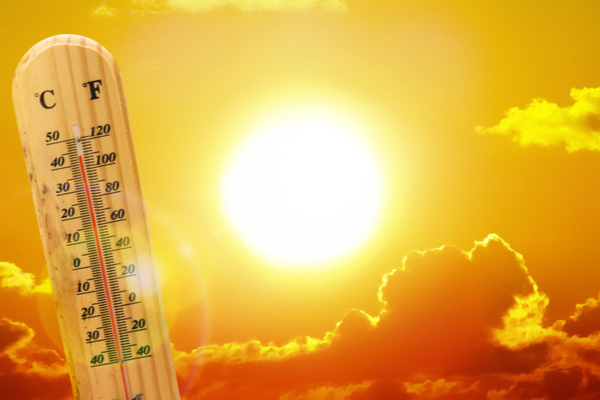Summertime means hot weather — sometimes dangerously hot — and extreme heat waves have become more frequent in recent decades, due to human-induced climate change. High heat and humidity have blanketed numerous states in the U.S. South, Midwest, and Great Plains in this latter part of August of 2023, resulting in what is referred to as a “heat dome.”
Simply put, a heat dome occurs when the atmosphere traps hot ocean air like a lid or cap, and the scorching heat is ensnared in that dome. This happens when strong, high-pressure atmospheric conditions combine with influences from El Nino and La Niña, creating vast areas of sweltering heat that gets trapped under the high-pressure “dome.”
According to the National Oceanic and Atmospheric Administration (NOAA), a team of scientists funded by the NOAA MAPP Program investigated what triggers heat domes and found the main cause was a strong change (or gradient) in ocean temperatures from west to east in the tropical Pacific Ocean during the preceding winter.
Imagine a swimming pool when the heater is turned on — temperatures rise quickly in the areas surrounding the heater jets, while the rest of the pool takes longer to warm up. If one thinks of the Pacific as a very large pool, the western Pacific’s temperatures have risen over the past few decades as compared to the eastern Pacific, creating a strong temperature gradient, or pressure differences that drive wind, across the entire ocean in winter. In a process known as convection, the gradient causes more warm air, heated by the ocean surface, to rise over the western Pacific, and decreases convection over the central and eastern Pacific.
As prevailing winds move the hot air east, the northern shifts of the jet stream trap the air and move it toward land, where it sinks, resulting in heat waves.
As SciTech Daily reports, the current heat dome in the United States is but one of several bouts of hot weather occurring around the world. Another stretch of extreme heat is gripping southern Europe, while scores of new temperature records are being set in Japan. Even winter weather in the Southern Hemisphere is unusually warm.
For those in the U.S., relief might be on the horizon. A cold front is expected to alleviate much of the Midwest’s heat by this week, as per the National Weather Service’s Weather Prediction Center. Nevertheless, regions like the southern plains and the Gulf Coast might endure the scorching temperatures for a few more days.
—
Photo Credit: Ed Connor / Shutterstock.com
